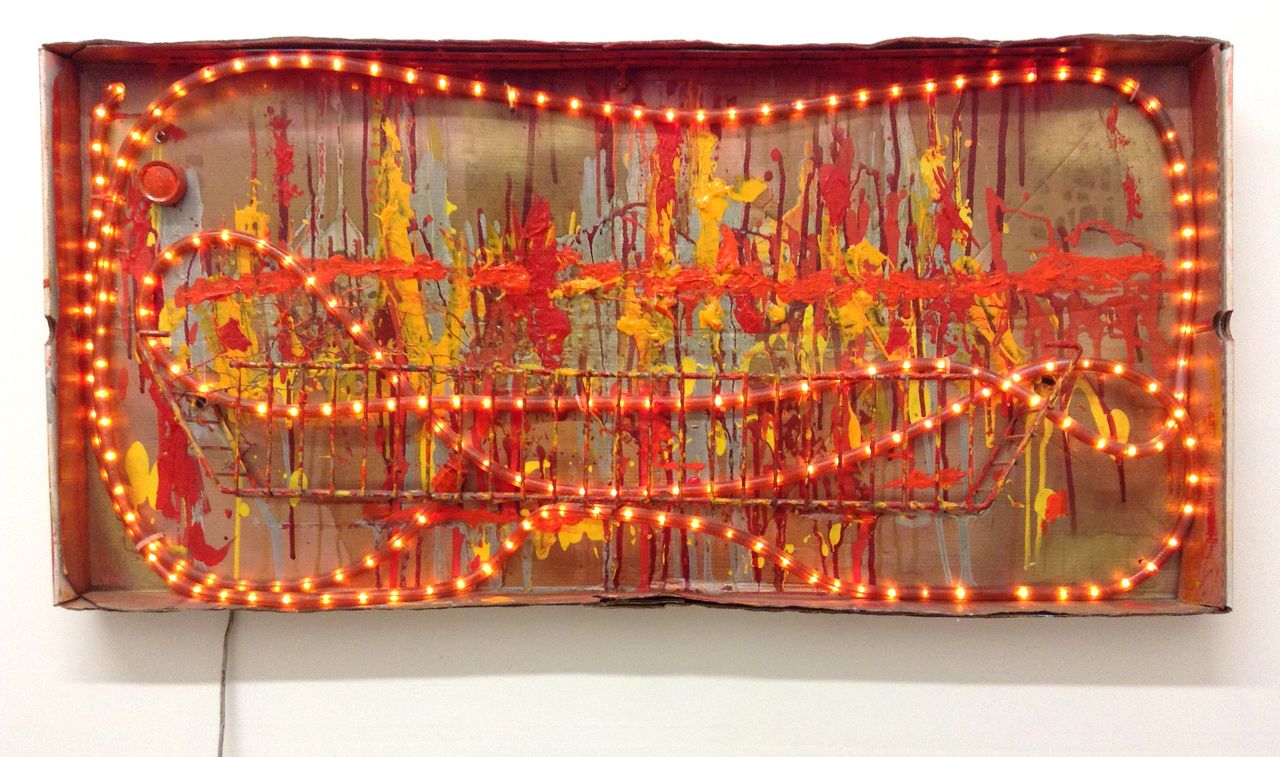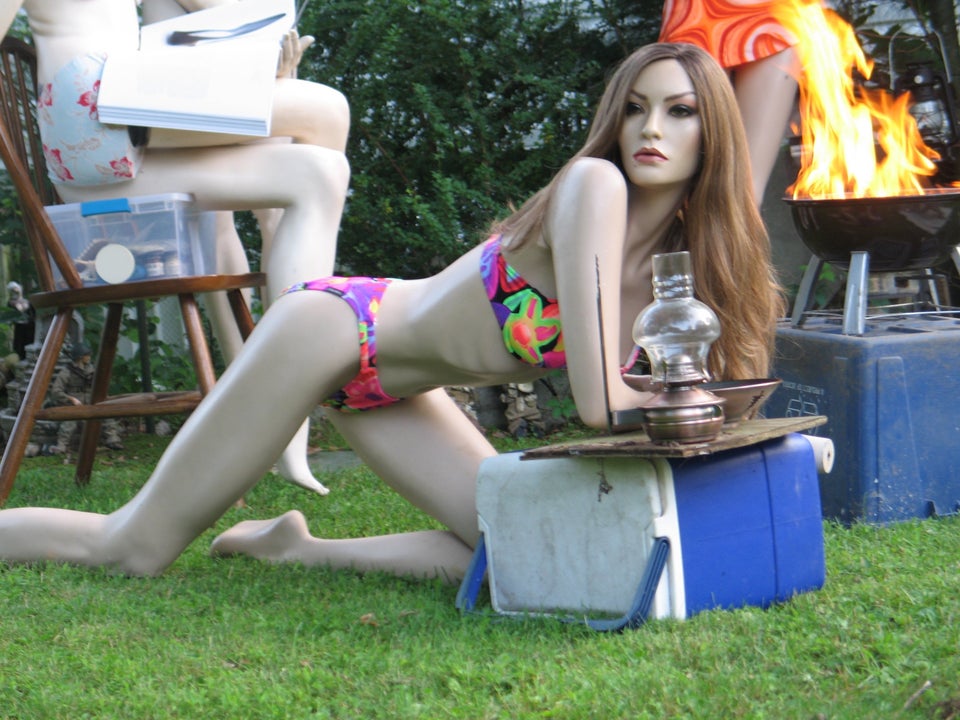The designation "outsider art" immediately implies a binary structure for the art world -- an inside and an outside.
Many contemporary and historical outsider artists fall clearly into the latter realm, their life stories almost mythical in their radical eccentricity. There's the artist who makes work while in a divine trance, the artist who spent a lifetime secretly building incredibly lifelike dolls, the artist who stopped speaking at the age of four and communicated solely through images. For many outsider artists, biographical details read like folklore, functioning alongside the artwork as sources of fascination and value in themselves.
But there are many artists who identify as outsiders who live and work not so much on the fringes, who aren't quite so easy to classify. They don't have an MFA and their work is far from the typical Chelsea fare, but they function independently, hold steady jobs, visit museums from time to time. They occupy the cracks that often creep in between the pillars of binary distinctions.
New York artist Daniel Swanigan Snow is one such artist. After working for years as a character actor, making a name for himself in a string of cult B movies, Snow became an assemblage artist at the age of 54. Long possessing a penchant for shapeshifting himself, Snow shifted his focus to transforming objects, turning, for example, a discarded pizza box into a flat, illuminated carnival vaguely reminiscent of sauce and cheese.
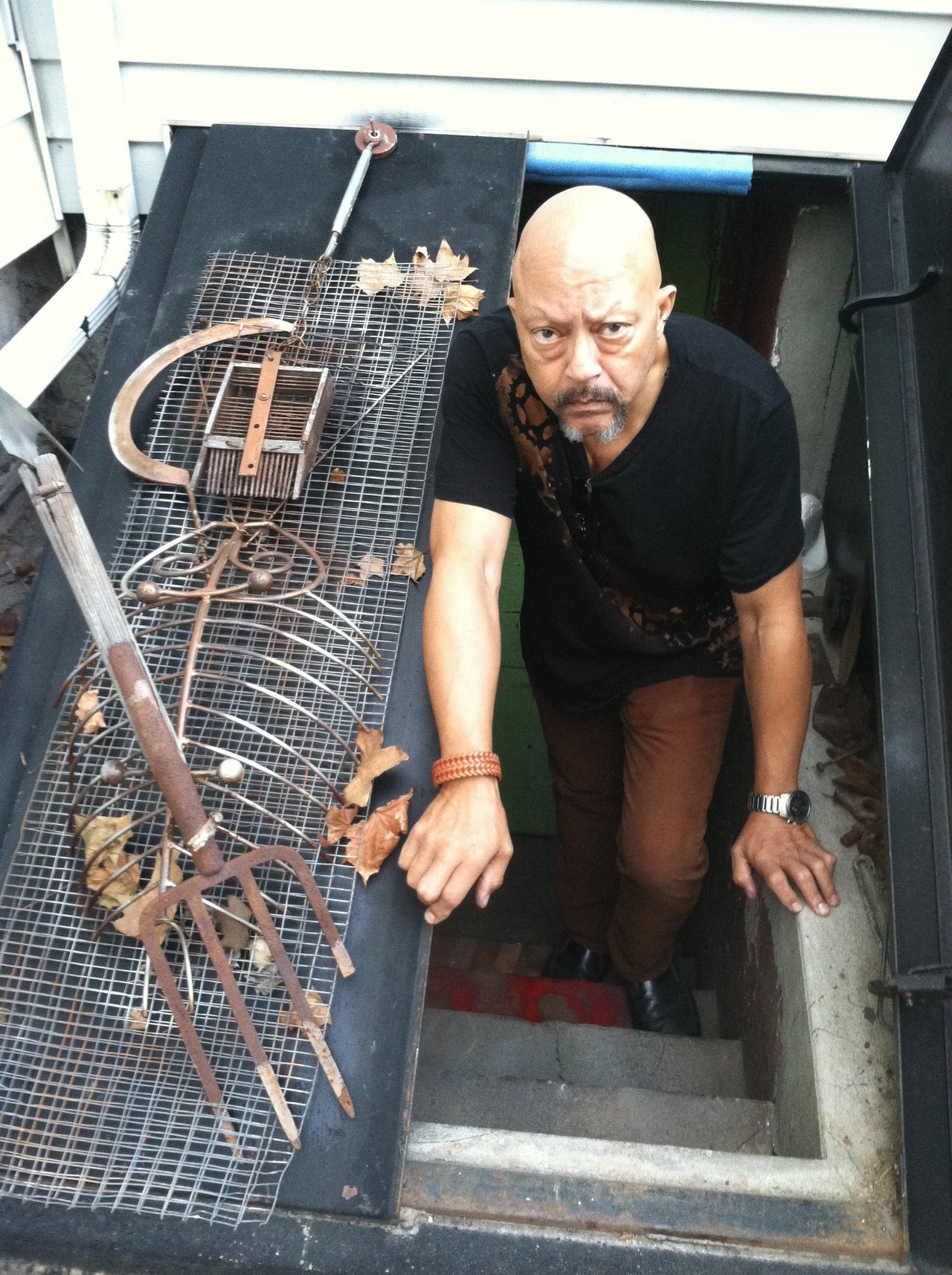
Snow, born in 1951, studied dramatic arts at Edinboro University of Pennsylvania in the early 1970s. Far before this, however, he had a short-lived brush with the visual arts.
"My first intro to art was back in junior high school," Snow explained to The Huffington Post. "I made a decent sculpture. It was so good the teacher was going to send it to a show in Cleveland. But she put the head into the kiln and it had an air bubble aneurysm and it exploded."
Approximately 40 years later, Snow put the untimely demise of his first piece behind him and took another shot. His present assemblage sculptures offer discarded objects a shot at the afterlife -- something his original work was denied -- an entryway from obsolescence into immortality. Instead of playing God, Snow plays Frankenstein. (Perhaps this is why he refers to his workspace as a laboratory.)
Snow was first introduced to his now art dealer, Cathouse FUNeral founding director, David Dixon, while acting in his films. (Dixon, too, is somewhat of a chameleon when it comes to creativity, playing the roles of both director and gallerist.) Dixon soon realized Snow's uncanny ability to change shape. In the two films Snow acted in, he played two roles in each. There were other eccentric aspects of his personality that hinted at a constant desire to metamorphose.
"In the first film we worked on together, Snow played a camp detective, a Scooby Doo type," Dixon explained to HuffPost. "We went shopping for a costume, but Snow soon told me he wanted to work on the costume himself, to develop the character on his own."

Snow showed up on set wearing everything Dixon had suggested at the same time, garments layered atop one another. "He is always constructing his image," Dixon continued. "He likes to dress up, likes to transform in costume."
Soon after Dixon and Snow began collaborating on screen, Snow began making art. And Dixon adjusted accordingly, shifting from a cinematic director to an art dealer. "Rather than directing him as a physical character, I get to represent him as an artist in the gallery space," Dixon said. "Before I was constructing an identity, now I'm constructing an identity around the work."
Snow begins his artistic process with an object, any durable doodad or thingamajig that happens to catch his eye. "I walk around the city a lot," Snow says, though he finds more in Brooklyn and Long Island than Manhattan. "There's all kind of stuff to be found. There's urban detritus, metal and glass, and stuff from nature, seashells and driftwood. I'm always on the lookout."
He has no particular qualifications for selecting a base. If something manages to stand out amongst the constant visual stimuli flooding New York's many boroughs at seemingly all times of day and night, it fits the bill. "It’s love at first sight," Snow says.
"I like the idea that things get a second chance," Snow added. "They might have been intended to serve one purpose and now they have another."

His three-dimensional collages resemble those of insider artists like Robert Rauschenberg and Isa Genzken, as well as outsiders like Lonnie Holley. Though Holley's practice centers around notions of sustainability and survival, Snow's is purely for the joy of the act itself. As his artist statement puts it: "Pop! The sounds of creation tearing apart old things to make new things is fun, educational and rewarding."
Dixon agrees. "He finds interesting artists on a material level, and he builds context," he explained. Starting with a cardboard box or a plastic bag or a slab of metal, Snow constructs glorious odes to unwanted waste, odd sculpted masses that show the vibrant potential of what's left behind. A babydoll head is placed atop a stool to resemble a geometric vintage robot, topped with a neon buddha. They're hybrid visions with no place of origin, an ambient collage of things, places and times that barely converge in glorious discord.
And yet, meanings and messages find ways to communicate through Snow's motley totems, like aliens communicating from the beyond. Some of his works take on environmental undertones, while many allude to contemporary civil rights issues. Back in his life as an actor, Snow starred in a one-man show based on W.E.B. Dubois, and has since incorporated themes of racial equality and justice in his work.
One memorable piece, called "I had a Nightmare," features a photograph of a little girl shot during a Martin Luther King, Jr. rally. "It's like a Pieta," Dixon said. "It has a lot of relevance now. The Black Lives Matter movement showed us how these issues aren't new, they're just now being talked about."
Snow's exhibition at the Outsider Art Fair is titled "Sober Don't Make Art," based off an offhand quote from Snow that Dixon managed to jot down. Although he does enjoy a drink when working in his laboratory, Snow wasn't necessarily referring to alcoholic intoxication.
"You can be stoned without drinking anything or smoking anything," Dixon explained. "He’s working with an altered state of mind. True poetry doesn’t necessarily come from inebriation. It comes from an altered state." Meditation, hypnosis, simply being open -- any of the above will do the trick. In Snow's words: "Judges don’t make art."
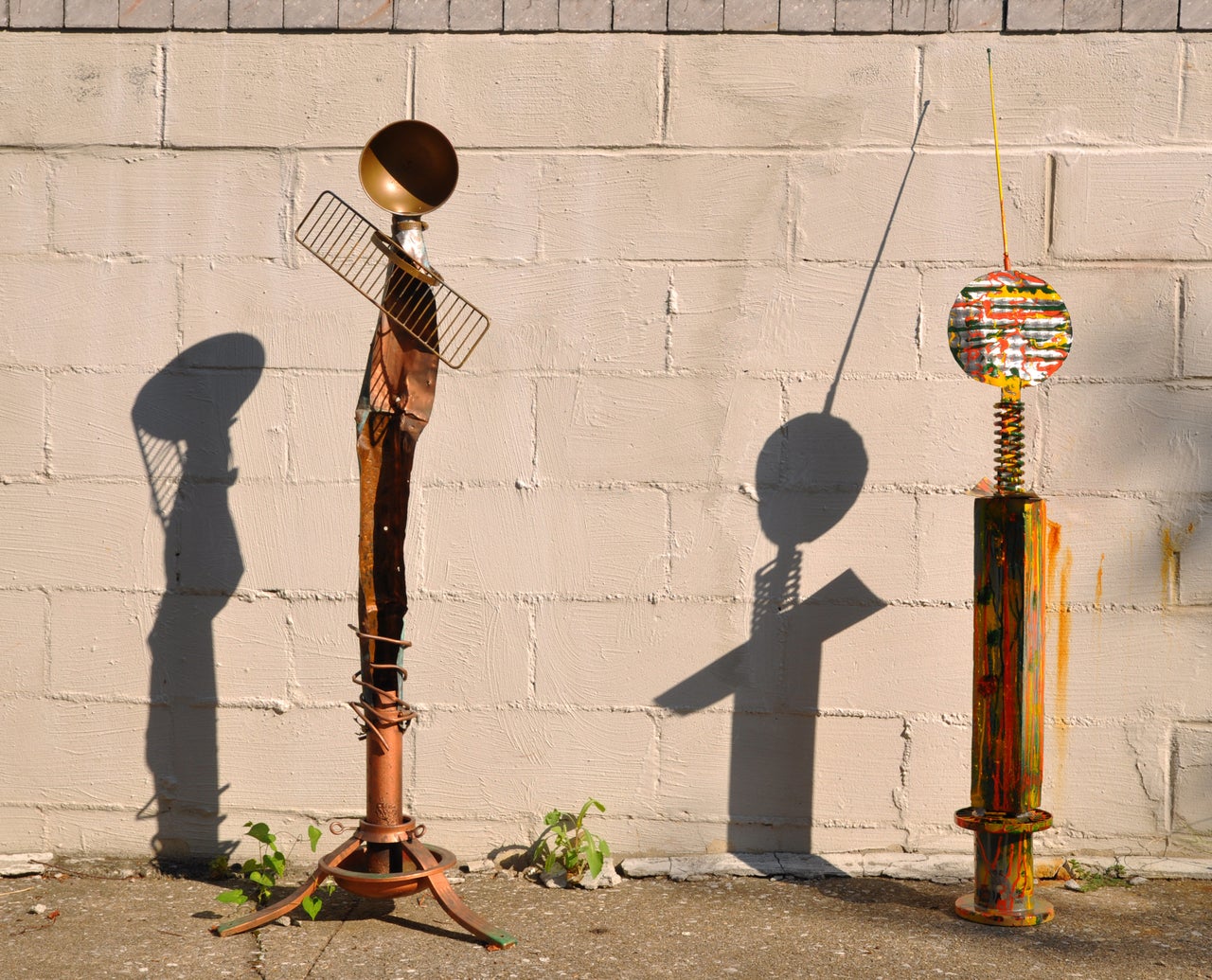
The exhibition chronicles one man's creative metamorphosis from actor to visual artist, a mid-life rebirth that provides Snow the artistic curiosity and unbridled creativity of a child. In art years, he's only ten.
And yet, of course, there are similarities between acting and art that transcend the differences in technique, media and result. "When I’m working, no matter what else is going on, when I get down to the laboratory, everything is left behind and I can feel myself completely into the object," Snow said. "It’s like when I go into a character."
He mentioned another connection between art and acting, the way both possess multiple entities in one. "Most of my pieces have an electric component to them," Snow said. "They're three pieces in one — in daylight, in darkness, and when they cast a shadow. What got me into theater is how different the stage looked in regular light and when the theatrical light hit."
Snow too possesses multitudes. Multiple characters, multiple talents, multiple visions. He's not an outsider artist by the strictest Art Brut definition of the word, but he's eccentric, self-taught, outside the norm. He is showing at the Outsider Art Fair, after all.
"I asked Dan if it’s okay to call him an outsider artist and he said every artist has to be on the outside before you are on the inside," Dixon said. By Snow's model, outside and inside are not exclusive opposites, but different phases, stages, roles, to be alternated or layered one atop the other like so many costumes.
Daniel Swanigan Snow's work will be on view at the Cathouse FUNeral booth at the Outsider Art Fair, from Jan. 21-24, 2016, at the Metropolitan Pavilion in New York City.
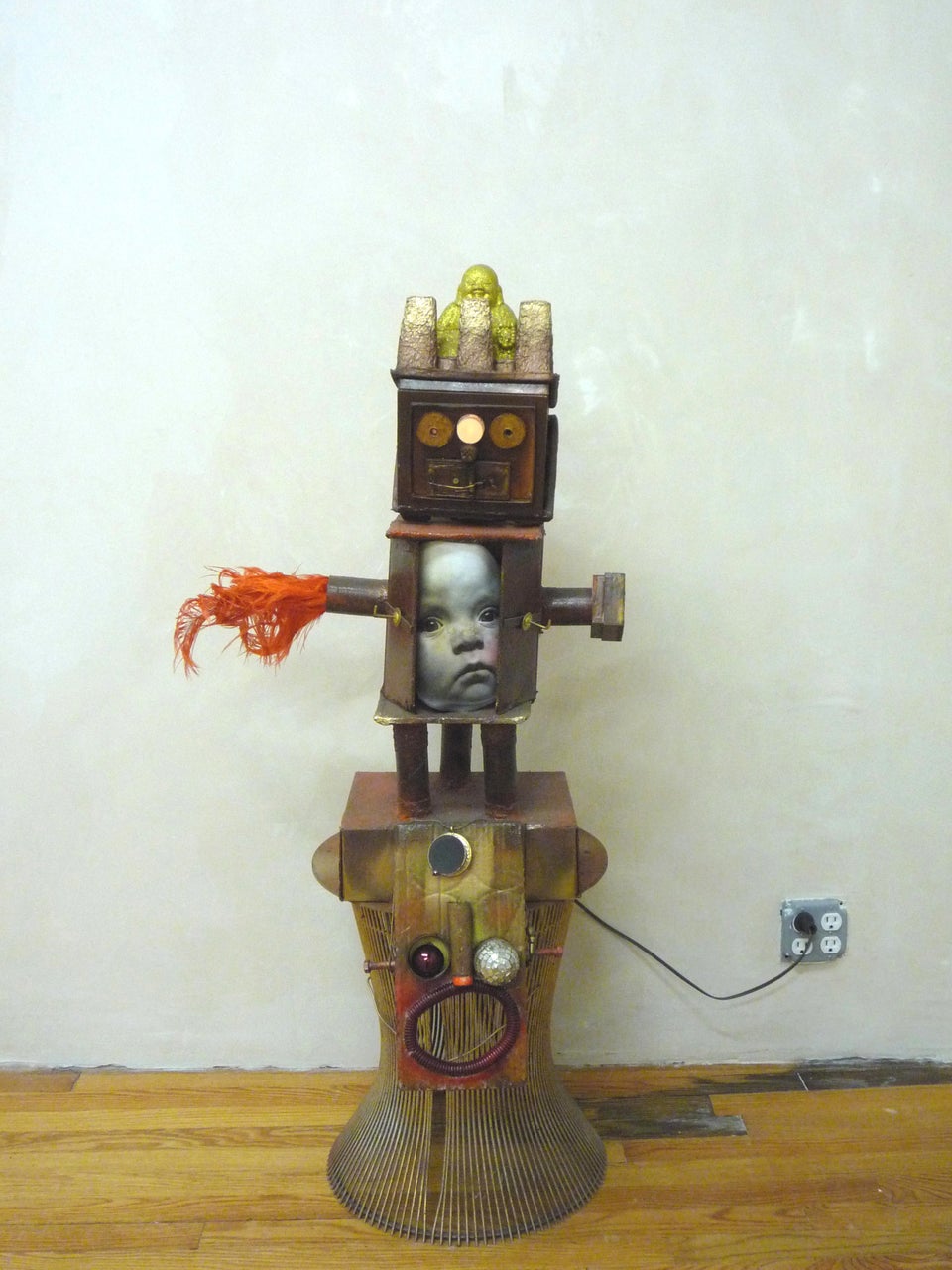

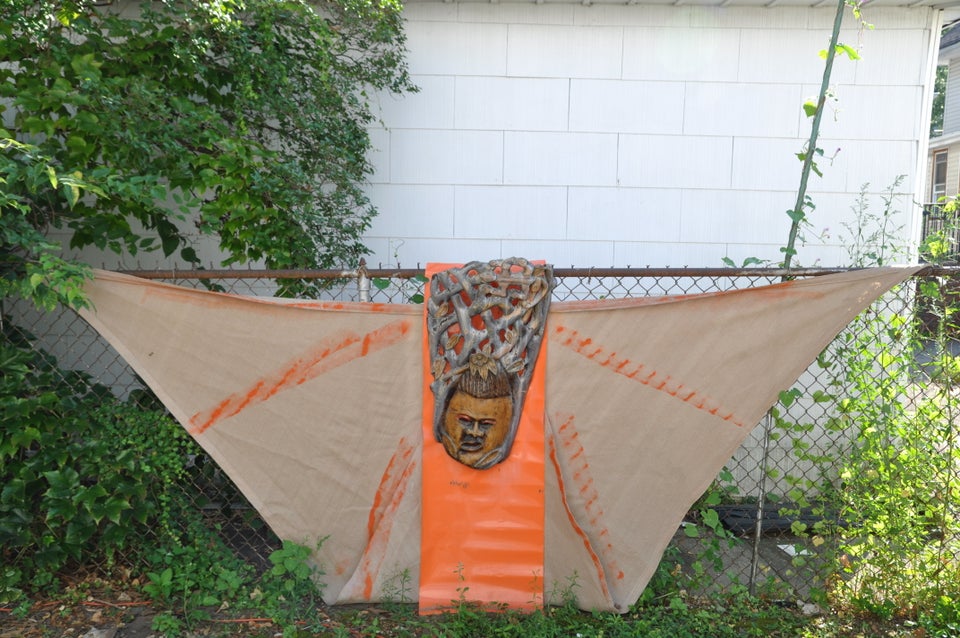
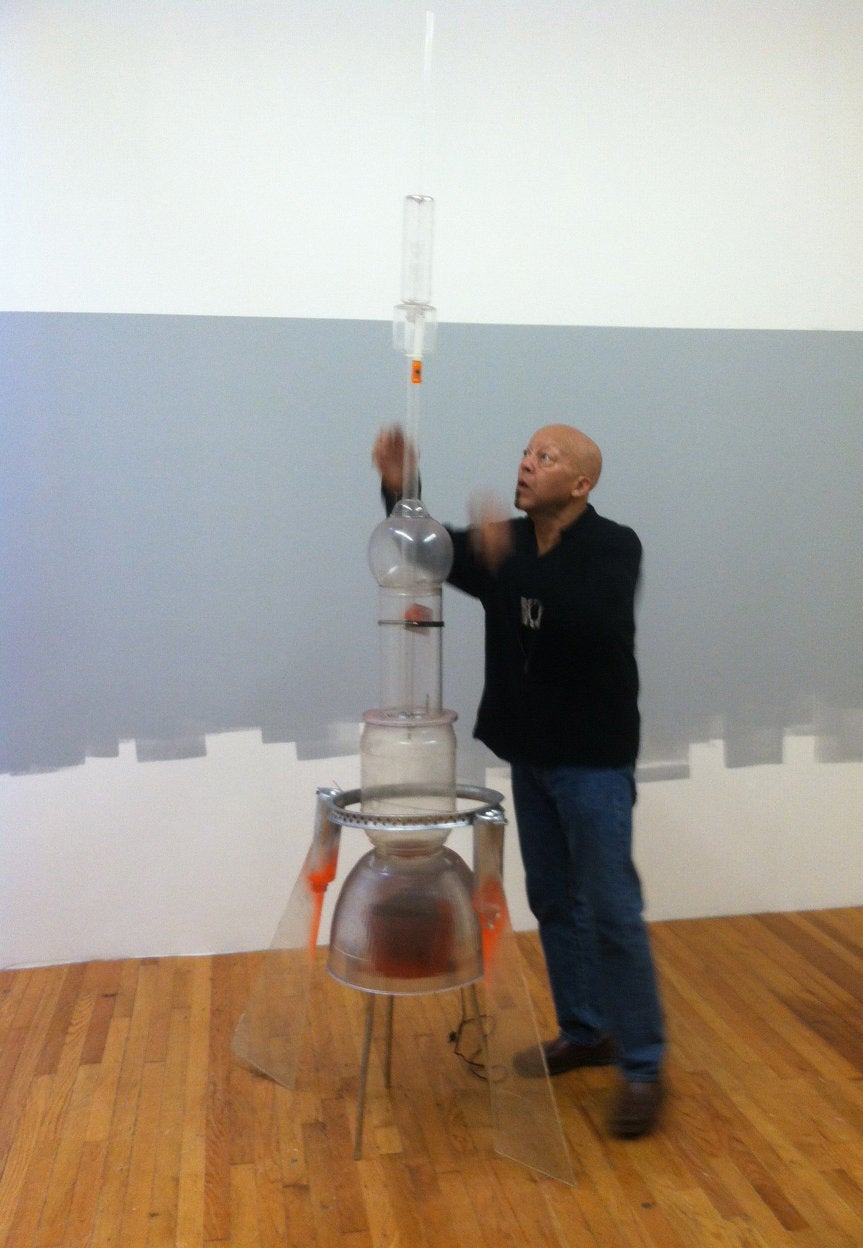
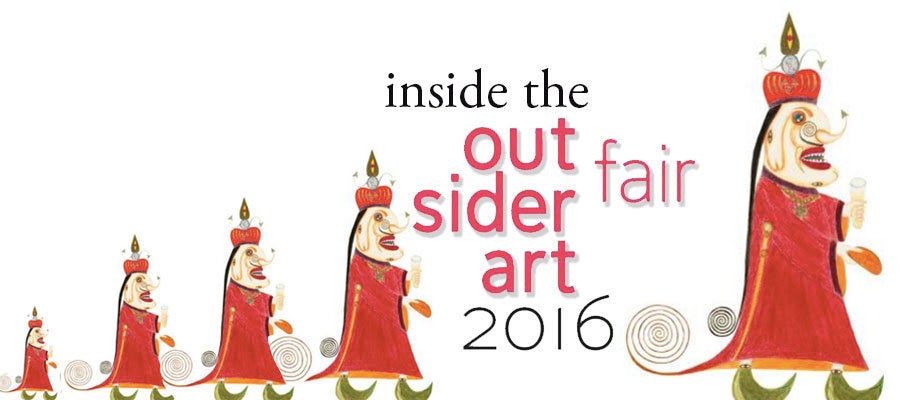
Also on HuffPost:
